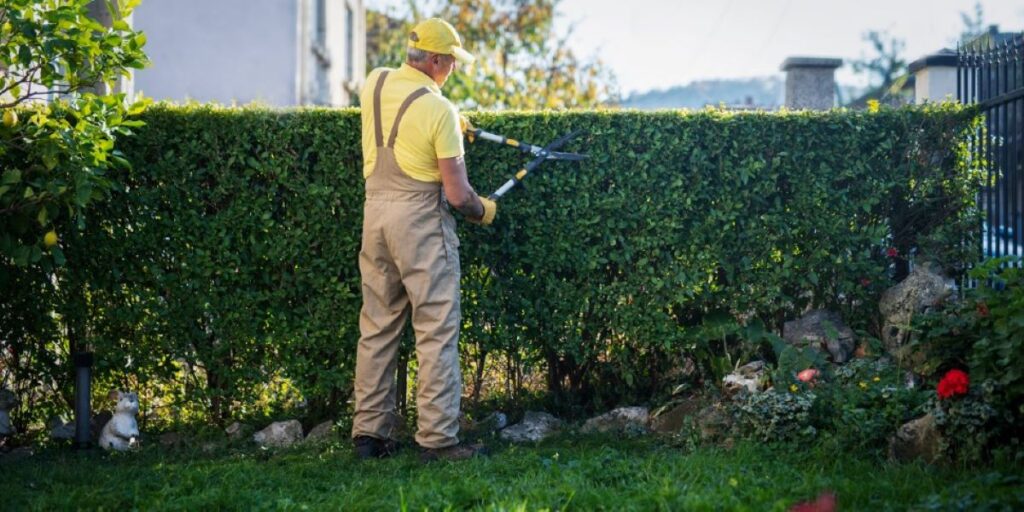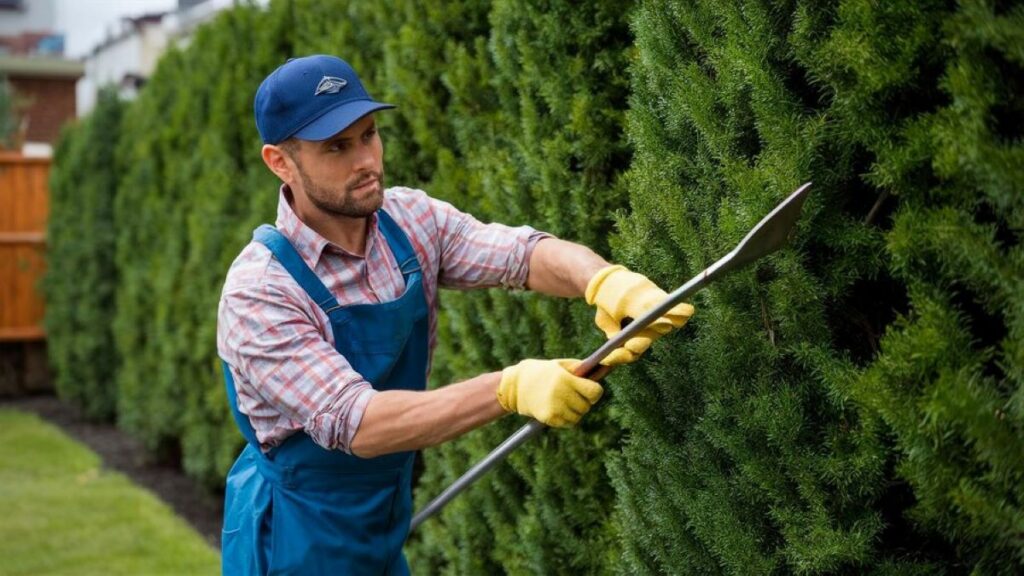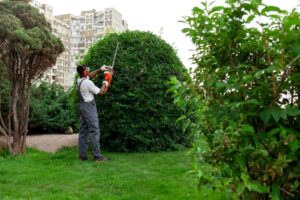Maintaining a well-manicured garden is a point of pride for many homeowners in Sydney. One of the key tasks in garden maintenance is hedge trimming, which not only enhances the aesthetic appeal of your property but also promotes healthy growth. However, knowing when to trim your hedges is crucial for achieving the best results. This article explores the optimal times for hedge trimming in Sydney, considering the region’s unique climate and the various types of hedges commonly found in Australian gardens.
The Climate of Sydney
Sydney’s climate is classified as temperate, characterised by warm summers and mild winters. This climate influences the growth patterns of plants, including hedges. Understanding these patterns can help homeowners determine the best times for trimming. The city’s proximity to the coast also plays a significant role in its weather, with sea breezes moderating temperatures and providing a unique microclimate that can vary from one suburb to another.
During the warmer months, typically from late spring to early autumn, hedges experience vigorous growth. This is when they are most likely to require trimming. Conversely, during the colder months, growth slows down significantly, making it less necessary to prune. Homeowners often find that the lush greenery during the summer months enhances the aesthetic appeal of their gardens, prompting more frequent maintenance to keep hedges in shape and promote healthy growth.
Seasonal Growth Patterns
In Sydney, the growth of hedges is largely influenced by seasonal changes. Spring and summer are the peak growth periods for most hedge varieties. As temperatures rise and daylight hours increase, hedges tend to flourish, making these seasons ideal for trimming. The combination of warmth and moisture from occasional rain showers creates an environment where plants can thrive, leading to dense foliage that not only provides privacy but also serves as a habitat for local wildlife, including birds and beneficial insects.
Autumn marks a transition period where growth begins to slow. While it is still possible to trim hedges during this time, it is essential to be cautious, as excessive pruning can stress the plants before winter sets in. Homeowners should consider the specific needs of their hedge species, as some may benefit from a light trim to maintain shape while others may require a more conservative approach. Winter, on the other hand, is generally not recommended for hedge trimming, as the cold weather can hinder recovery and increase the risk of damage. During this season, it is advisable to focus on other aspects of garden maintenance, such as mulching and soil preparation, to ensure that hedges are well-equipped to flourish when spring arrives once more.
Types of Hedges and Their Specific Needs
Different types of hedges have varying requirements when it comes to trimming. Understanding the specific needs of each type can help homeowners determine the best time to prune. Visit https://www.rba.gov.au/publications/rdp/2006/2006-09/hedging-practices-in-australia.html to get about hedging practices in Australia.
Evergreen Hedges
Evergreen hedges, such as Lilly Pilly and Photinia, are popular choices for Sydney gardens. These plants retain their foliage year-round and generally respond well to trimming. The best time to trim evergreen hedges is in late spring or early summer, just before the peak growing season. This timing encourages new growth and helps maintain a dense, lush appearance.
It is advisable to avoid trimming evergreen hedges in late autumn or winter, as this can expose the plants to harsh weather conditions and inhibit their natural growth cycle. Additionally, regular maintenance throughout the growing season can help prevent overgrowth and maintain the desired shape. Homeowners should also consider the specific growth habits of their chosen evergreen species, as some may require more frequent trimming than others to keep them looking tidy and healthy.
Deciduous Hedges
Deciduous hedges, like the classic Beech or Hornbeam, lose their leaves in winter, making them a different case altogether. The ideal time to trim these hedges is during late winter or early spring, just before new growth begins. This timing allows for a healthy flush of leaves and helps shape the hedge for the upcoming growing season.
Trimming deciduous hedges while they are still dormant can also prevent unnecessary stress and damage to the plants, ensuring a robust recovery in spring. Furthermore, it is important to consider that these hedges can provide excellent wildlife habitat during the winter months, as their bare branches offer shelter for various birds and small mammals. Therefore, homeowners might wish to balance their trimming schedule with the ecological benefits these hedges provide, perhaps leaving some areas untrimmed to support local biodiversity while still maintaining the overall aesthetics of their garden.
Signs That Your Hedges Need Trimming
While understanding the best times to trim hedges is essential, recognising when they actually need trimming is equally important. Several signs indicate that hedges may require attention.
Overgrowth and Shape
One of the most obvious signs that hedges need trimming is overgrowth. If the hedges appear unruly or have grown beyond their intended shape, it is time to take action. Regular trimming not only keeps hedges looking tidy but also encourages healthy growth.
Moreover, maintaining the desired shape of hedges can enhance the overall aesthetics of the garden, contributing to a well-designed landscape. A well-trimmed hedge can serve as an attractive backdrop for other garden features.
Health of the Plant
Another critical aspect to consider is the health of the hedge. If the leaves are yellowing, or there are signs of disease or pests, it may be necessary to trim back affected areas. This helps to promote airflow and sunlight penetration, reducing the risk of further issues.
Regular maintenance, including trimming, can significantly improve the overall health of hedges, making them more resilient to pests and diseases.

Tools and Techniques for Hedge Trimming
Having the right tools and techniques is essential for effective hedge trimming. Using appropriate equipment not only makes the job easier but also ensures a clean cut, which is vital for the health of the plants.
Essential Tools
Common tools for hedge trimming include hedge shears, electric hedge trimmers, and pruning saws. Hedge shears are ideal for small to medium hedges, allowing for precise cuts and shaping. For larger hedges, electric trimmers can save time and effort, providing a more uniform finish.
It is also advisable to invest in safety gear, such as gloves and eye protection, to ensure a safe trimming experience. Proper maintenance of tools, including regular sharpening, is essential for achieving the best results.
Trimming Techniques
When trimming hedges, it is important to follow specific techniques to promote healthy growth. One effective method is to trim the top of the hedge slightly narrower than the base. This allows sunlight to reach the lower branches, encouraging fuller growth throughout the hedge.
Additionally, it is advisable to avoid cutting into old wood, as this can hinder new growth. Instead, focus on shaping and removing the outer growth to maintain the overall health and appearance of the hedge.
See Also : Professional Hedge Trimming Services: Benefits for Your Garden
Environmental Considerations
In recent years, there has been a growing awareness of the environmental impact of gardening practices. When trimming hedges, it is important to consider the local ecosystem and wildlife.
Bird Nesting Seasons
Many birds choose to nest in hedges, particularly during spring and early summer. To protect nesting birds, it is advisable to avoid trimming during these months. Checking for nests before commencing any trimming is a responsible practice that helps to preserve local wildlife.
By being mindful of the nesting seasons, homeowners can contribute to the conservation of local bird populations while maintaining their gardens.
Waste Management
Proper disposal of hedge clippings is another important consideration. Instead of simply discarding clippings, consider composting them or using them as mulch. This not only reduces waste but also enriches the soil, promoting healthier plants in the long run.
Many local councils in Sydney also offer green waste collection services, making it easier for homeowners to dispose of garden waste responsibly.

Conclusion
In conclusion, the best time to trim hedges in Sydney largely depends on the type of hedge and the seasonal growth patterns. By understanding the specific needs of different hedge varieties and recognising the signs that trimming is necessary, homeowners can maintain healthy and attractive hedges throughout the year.
Utilising the right tools and techniques, while also considering environmental factors, can further enhance the effectiveness of hedge trimming. By following these guidelines, residents can take pride in their gardens and contribute positively to the local ecosystem.
Ultimately, regular maintenance and timely trimming not only enhance the beauty of gardens but also promote the health and longevity of hedges, ensuring they remain a valuable asset to any property in Sydney.


